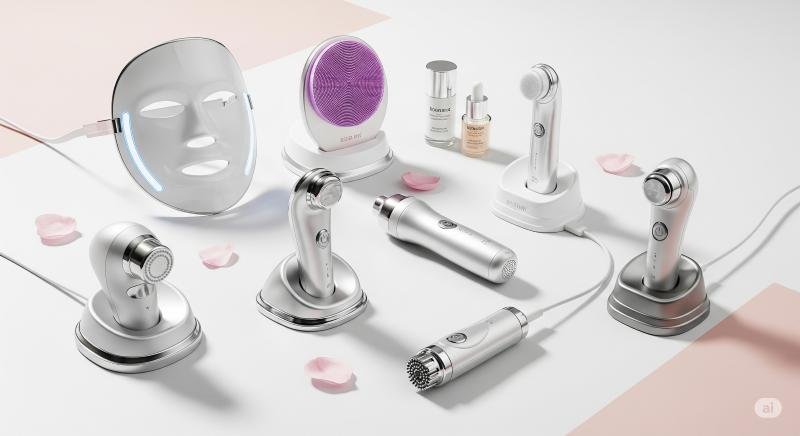The Booming Skin Care Devices Market: Growth, Trends, and Challenges
The Skin Care Devices Market is poised for a remarkable transformation, projected to surge from USD 23.8 billion in 2025 to an astonishing USD 101.5 billion by 2035. This growth represents a significant compound annual growth rate (CAGR) of 15.6% over the next decade. This article delves deep into the driving factors behind this expansion and the key players shaping the industry landscape.
Driving Factors Behind Market Growth
Technological Innovations
Rapid advancements in technology are fundamentally changing the skin care landscape. The integration of artificial intelligence (AI) in diagnostics and device functionality is particularly noteworthy. For example, brands like Nu Skin Enterprises are introducing AI-driven systems focused on anti-aging and skin cleansing that cater to consumers’ growing preference for at-home treatments.
Increasing Consumer Demand for Non-Invasive Procedures
As more consumers seek effective solutions without invasive surgery, the demand for advanced skincare devices is on the rise. Non-invasive technologies such as radiofrequency micro-needling and laser therapies are gaining popularity. Leaders like Hologic (Cynosure) and Cutera Inc. are at the forefront of delivering these innovative solutions.
Intense Market Competition
The competitive landscape is heating up, with key players such as Lumenis Ltd. and Henry Company diversifying their offerings. Brands traditionally associated with different sectors are now venturing into skincare tech, reflecting a broader trend towards health-tech sustainability.
Key Players Driving Innovation
Some of the most impactful companies in this sector include:
- Nu Skin Enterprises: Innovates at-home beauty devices utilizing AI for enhanced effectiveness.
- Hologic (Cynosure): Specializes in aesthetic medical devices, particularly in RF micro-needling and body contouring services.
- Cutera Inc.: Provides scalable non-invasive solutions that have gained immense trust from both clinics and consumers.
- Lumenis Ltd.: Capitalizes on laser technology for a range of skincare treatments.
These leaders are making strides not just in beauty but also in creating data-driven and environmentally sustainable products.
Regional Growth Insights
North America: A Leading Market
North America dominates the market due to heightened consumer awareness and a robust clinical framework. The U.S. is anticipated to lead with a CAGR of 15.5%, fueled by a strong dermatology ecosystem and growing adoption of AI-powered tools.
Europe: A Promising Contender
European nations, especially Germany, France, and the UK, showcase a high-spending aging demographic alongside a flourishing medspa culture. The preference for clinically tested and CE-certified products continues to dominate consumer choices.
Asia-Pacific: The Fastest Growing Region
The Asia-Pacific market is rapidly expanding, driven by countries like South Korea and Japan, where trends such as K-beauty and tech-integrated skincare innovations redefine consumer expectations. With growth rates of 15.6% and 15.4%, respectively, this region presents exciting opportunities for market entrants.
Challenges Facing the Skin Care Devices Market
Despite its promising outlook, the Skin Care Devices Market faces several challenges:
-
High Costs of Advanced Devices
- The development and purchase costs for laser therapies and AI-integrated devices pose barriers, particularly in price-sensitive markets.
-
Stringent Regulatory Approvals
- Compliance with rigorous regulatory standards from entities like the FDA and CE can delay market entry and inflate costs.
-
Proliferation of Counterfeit Products
- The rise of counterfeit devices online undermines consumer trust and raises safety concerns.
-
Low Consumer Awareness in Emerging Markets
- Many developing regions still struggle with limited awareness of effective device usage, even as disposable incomes rise.
- Complexity of Use for At-Home Devices
- High-tech beauty tools often require specific usage techniques, creating a barrier for less tech-savvy consumers.
Conclusion
As the Skin Care Devices Market continues to grow at a remarkable pace, the interplay of innovation, consumer demand, and competitive dynamics will shape its evolution. However, stakeholders must navigate challenges such as cost implications and regulatory hurdles to capitalize on emerging opportunities.
For further insights into the market dynamics and opportunities, explore comprehensive research reports on related consumer products, including the Hair Care Market and Safety Eyewear Market.
Stay ahead in understanding the influences driving the skincare technology landscape as it adapts to consumer needs and preferences.


